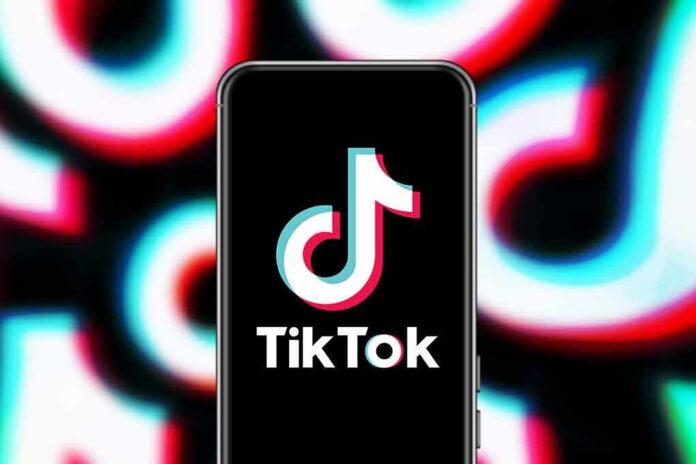TikTok’s ban on #SkinnyTok reveals a disturbing truth: despite platform crackdowns, dangerous content promoting extreme thinness continues to thrive through clever workarounds, putting millions of young users at risk of developing life-threatening eating disorders.
Key Takeaways
- TikTok banned the hashtag #SkinnyTok after European regulators flagged its promotion of dangerous weight loss content, but harmful messaging persists through algorithmic loopholes.
- Research confirms that exposure to this content significantly increases the risk of eating disorders, with anorexia having the highest mortality rate among all psychiatric conditions.
- Content creators easily circumvent platform regulations by using code words, alternative hashtags, and subtle messaging to continue promoting unhealthy body standards.
- While TikTok has implemented safety redirects to eating disorder resources, experts argue more comprehensive oversight and legislative action are needed.
- The body positivity movement faces an uphill battle as beauty standards shift back toward extreme thinness, with harmful content consistently outperforming positive messaging.
The Digital Battlefield of Body Image
TikTok’s recent decision to ban the hashtag #SkinnyTok represents the latest skirmish in an ongoing war against harmful content promoting unrealistic body standards. The ban came after European regulators raised serious concerns about the platform’s role in spreading dangerous weight loss advice and glorifying extreme thinness. While the Chinese-owned platform deserves some credit for taking action, the effectiveness of such measures remains questionable at best. The ban simply redirects searches for #SkinnyTok to resources from the National Alliance for Eating Disorders, but the underlying content continues to flourish under different guises.
Content creators dedicated to promoting unhealthy beauty standards have demonstrated remarkable resilience in adapting to platform restrictions. They employ code words, alternative hashtags, and subtle messaging techniques that skirt the edges of platform policies while still conveying the same harmful ideals. This digital cat-and-mouse game highlights the fundamental weakness of purely technical solutions to what is, at its core, a cultural and psychological problem that conservative values of personal responsibility and family oversight could better address.
The Real-World Consequences
The stakes in this battle could not be higher. According to medical experts, anorexia nervosa has the highest mortality rate among all psychiatric disorders, with sufferers facing a risk of death 5-10 times higher than their peers. The persistent circulation of content glorifying extreme thinness represents a genuine public health crisis, particularly for young women and girls who comprise the majority of TikTok’s user base. Research clearly demonstrates that consuming such content significantly increases the likelihood of developing disordered eating patterns.
“A lot of creators are explicitly promoting anorexia to their audience,” said Kate Glavan, eating disorder awareness advocate.
While some content creators like Glavan work to counteract these harmful messages by promoting awareness of the dangers, their efforts face an uphill battle against TikTok’s algorithm, which tends to amplify sensational and extreme content that drives engagement. The platform’s business model fundamentally relies on maximizing user attention, and unfortunately, content that promotes unrealistic body standards typically generates more engagement than body-positive messaging. This creates a perverse incentive structure where the most harmful content often reaches the widest audience.
Platform Responsibility vs. Government Overreach
Social media platforms like TikTok occupy an uncomfortable middle ground in this debate. While they don’t create the harmful content themselves, they build and maintain the systems that amplify, recommend, and target such messaging to vulnerable users. TikTok’s efforts to address the problem through hashtag bans and safety redirects represent steps in the right direction, but they fall far short of addressing the root causes. The question remains whether meaningful change can come from within tech companies or whether external pressure through legislation is necessary.
“You have many kinds of content in the gray zones,” said Brooke Erin Duffy, communications professor at Cornell University.
From a conservative perspective, this situation presents a complex challenge. While we generally favor limited government intervention in private business, the protection of children from predatory practices represents one of the core responsibilities of government. The current hands-off approach has allowed social media companies to experiment on young minds with algorithms designed to maximize engagement regardless of psychological harm. President Trump has repeatedly expressed concern about TikTok’s influence on American youth, and this latest controversy validates those concerns about both the platform’s content policies and its ties to the Chinese Communist Party.
The Cultural Pendulum Swings Back
The broader context for this controversy involves an apparent cultural shift back toward celebrating extreme thinness after a brief period where the body positivity movement gained ground. Researchers have documented this trend across multiple platforms, with content creators and models noting increased pressure to conform to increasingly unrealistic standards. This shift reflects deeper cultural currents that cannot be addressed through simple platform policy changes or algorithmic tweaks.
“Negative images that are unrealistic or show really thin people or really muscular people tend to have a more lasting impact than body-positive content,” said Amanda Raffoul, research scientist at Harvard Medical School.
The most effective strategy for combating harmful content remains the most traditional one: strengthening family bonds and parental oversight of children’s digital lives. Rather than relying solely on tech companies or government regulators to solve these problems, parents must take a more active role in monitoring and guiding their children’s social media consumption. This approach aligns perfectly with conservative values of personal responsibility and family-centered solutions to social problems, rather than expanding government oversight into yet another aspect of American life.











